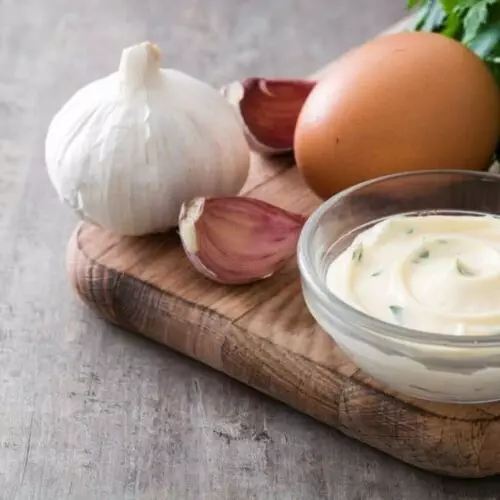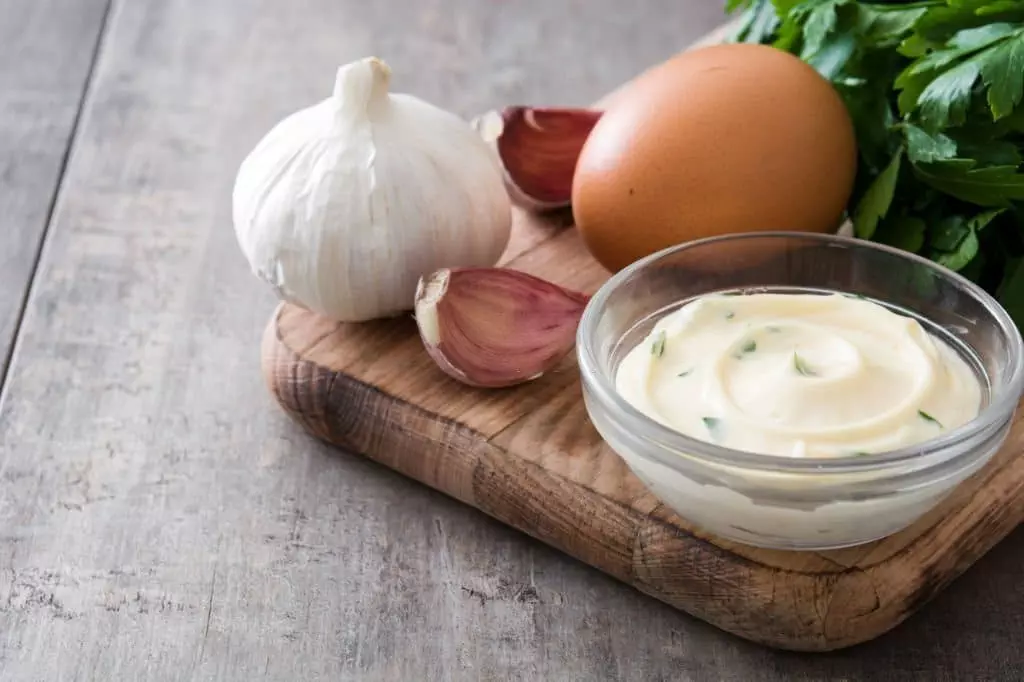Aioli sauce, a creamy and flavorful condiment, has captured the hearts and palates of food enthusiasts worldwide. In this article, we delve into the history, variations, and essential tips for making the sauce. Whether you’re a garlic lover or looking to spice things up, read on to discover the wonders of this versatile culinary creation.
What is Aioli Sauce?
Aioli sauce, derived from the Provençal cuisine of Southern France, is a traditional condiment made primarily with garlic and oil. It boasts a rich and velvety texture, similar to mayonnaise, and is commonly used as a dipping sauce or spread. The word “aioli” itself originates from the Provençal words “ai” (garlic) and “òli” (oil), representing the core ingredients of the sauce.
A Brief History of Aioli Sauce
Aioli sauce traces its roots back to the Mediterranean region, where it has been enjoyed for centuries. Created as a simple emulsion of garlic and olive oil, it was considered a staple in the diets of Mediterranean communities. Over time, the recipe evolved to incorporate additional ingredients, such as egg yolks, lemon juice, or vinegar, to enhance flavor and stability. Today, the sauce has gained international popularity and has become a staple in various cuisines around the world.
How to Make Aioli Sauce:
Creating a luscious aioli sauce is a delightful culinary adventure. Follow these steps to craft your aioli masterpiece:
- Gather the Ingredients:
- 4 cloves of garlic, minced
- 1/2 teaspoon salt
- 1/2 teaspoon Dijon mustard
- 1 cup mayonnaise
- 1 tablespoon lemon juice
- Optional: 1/4 teaspoon ground black pepper
- Optional: 1/4 teaspoon paprika
- Prepare the Garlic Paste:
- In a medium-sized bowl, combine the minced garlic and salt.
- Use the back of a spoon, mortar, and pestle to mash the garlic and salt together, creating a paste.
- Mix in Mustard and Mayonnaise:
- Add the Dijon mustard to the garlic paste and mix well.
- Gradually add the mayonnaise to the garlic and mustard mixture, stirring constantly until well combined.
- Incorporate Lemon Juice and Seasonings:
- Add the lemon juice to the mixture and stir until smooth.
- For added flavor, consider including ground black pepper and paprika. Mix well.
- Adjust Seasonings and Chill:
- Taste the sauce and adjust the seasonings as desired.
- Transfer the sauce to a jar or container with a tight-fitting lid and refrigerate for at least 30 minutes before serving.
Variations of the Sauce:
Aioli sauce offers endless possibilities for customization. Here are a few popular variations to consider:
- Spicy Aioli Sauce:
- Add a kick to your aioli by incorporating spicy elements such as chili flakes, hot sauce, or minced jalapeños.
- Experiment with different levels of spiciness to suit your taste preferences.
- Roasted Garlic Aioli:
- Elevate the flavor profile by using roasted garlic instead of raw garlic.
- Roasting garlic brings out a sweeter and more mellow taste, adding depth to the sauce.
- Herb-infused Aioli:
- Introduce fresh herbs like basil, cilantro, or dill into the aioli sauce for a burst of freshness.
- Finely chop the herbs and fold them into the sauce for an aromatic twist.
Tips and Tricks for the Perfect Sauce:
Achieving a delectable aioli sauce requires attention to detail. Consider these tips and tricks:
- Quality Ingredients:
- Opt for fresh and high-quality garlic, as it serves as the base flavor of the sauce.
- Use a good-quality mayonnaise to ensure a creamy and smooth texture.
- Emulsion Techniques:
- When combining the garlic and oil, take care to create a stable emulsion by slowly incorporating the oil into the mixture while continuously whisking or using a blender.
- Gradually add the oil in a steady stream until the desired consistency is achieved.
- Temperature Control:
- Ensure that all ingredients are at room temperature before starting.
- Cold ingredients can hinder the emulsification process, leading to a separated or broken sauce.
- Storage and Shelf Life:
- Homemade aioli sauce can be stored in an airtight container in the refrigerator for up to one week.
- To extend its shelf life, consider using pasteurized eggs or store-bought mayonnaise instead of homemade.
Aioli sauce, rooted in Mediterranean cuisine, continues to captivate taste buds with its creamy texture and bold flavors. Whether enjoyed as a dip, spread, or accompaniment to a wide range of dishes, aioli sauce adds a delightful touch to any culinary creation. With the basic recipe and various variations at your disposal, you can embark on a gastronomic journey, exploring the endless possibilities of this versatile condiment.

Aioli: History, Variations, and Tips.
Ingredients
- 4 Cloves of garlic minced
- ½ tsp Salt
- ½ tsp Dijon mustard
- 1 cup Mayonnaise
- 1 tbsp Lemon juice
- ¼ tsp Ground black pepper optional
- ¼ tsp Paprika optional
- 1 tbsp Fresh parsley finely chopped (optional)
Instructions
- In a medium-sized bowl, combine the minced garlic and salt. Use the back of a spoon or a mortar and pestle to mash the garlic and salt together, creating a paste.
- Add the Dijon mustard to the garlic paste and mix well.
- Gradually add the mayonnaise to the garlic and mustard mixture, stirring constantly until well combined.
- Add the lemon juice to the mixture and stir until smooth.
- If desired, you can add ground black pepper and paprika for extra flavor. Mix well.
- Taste the aioli sauce and adjust the seasonings as needed, adding more salt, lemon juice, or other spices according to your preference.
- Transfer the aioli sauce to a jar or container with a tight-fitting lid.
- Place the aioli sauce in the refrigerator and let it chill for at least 30 minutes before serving. This will allow the flavors to meld together.
- Serve the aioli sauce as a dip for vegetables, seafood, or as a spread for sandwiches and burgers.








